One of the most helpful pieces of advice I ever got is when I’m on location, don’t forget to look down. There is a world of wonder right at your feet and it’s often these little scenes that can be as captivating as the larger scene you may be there to photograph. Besides looking behind you during a sunrise or sunset, when I look down and adjust my vision, a whole world of compositional possibilities open up to me.
I was recently in the Eastern Sierras of California for my Fall color workshop. We had a great group and great conditions and the workshop was a wonderful experience for everyone and they came back with some amazing images. It’s hard not to be “wowed” and awestruck by the amazing views of snow capped mountains, forests erupting in color, reflections on an alpine lake, or the tufa sprouting from Mono Lake. That’s why we are here, to photograph some of this amazing landscape. One of the big lessons that Jack Graham and myself reminded our folks about was the importance looking down at your feet, or along the forest floor, and then working to create interesting compositions.
You may disagree with me on this statement, but here goes…the grand landscape photograph is fairly easy to execute and there isn’t as much artistic skill required as some other photographs in the same location. My rationale is this…often times with grand landscapes, you don’t have a ton of artistic choice and decisions to make. The scene or photograph is very evident and you didn’t have to “find” anything, it’s literally screaming at you with its awesome beauty. You are shooting a huge scene encompassing many miles, you are subject to the light and atmospheric conditions (which are out of your control) and there is only so many ways to shoot a large landscape. They are pretty pictures and I do take grand landscape photographs a lot. I enjoy the sense of being there, the ability to impart feelings of awe or grandeur to those who view my photographs and I come away with a sense of satisfaction at having been fortunate enough to have good conditions and having the skill necessary to capture it along with a sense of emotion or feeling.

In the above shot taken at Conway Summit, this was a beautiful scene and one that I’m happy to photograph and bring my workshop folks to. The truth behind this shot though is that we were in a pullout alongside the highway, it was literally the only place to park along the road. Once there, we could walk back and forth along the guardrail, but really couldn’t deviate too much from what was provided for us. I shot this with both a wide angle and medium telephoto lens to either encompass the whole scene or selectively zoom in to interesting features. There wasn’t a lot of artistic vision required to identify this as a photographic possibility, nor was there a lot I could do to flex my artistic muscle with the large subject and limited viewpoints. I’m still happy with the photo, I just didn’t get a lot of artistic satisfaction from it. I didn’t really “create” anything, I just captured a scene created by nature and did it the best I could within the given circumstances.
But where I personally find even greater artistic satisfaction is when I am more involved in “seeing” a scene and then working to create a composition that is pleasing to look at as well as artistically and technically proficient. It’s these types of occasions that I derive maximum artistic pleasure and pride that I was able to “see” a unique part of the world around me and then bring all of my artistic skills to bear in order to capture and convey the scene. One of the best ways to find these kinds of scenes is not in the grand landscape, but in the more intimate spaces of nature and the best way to find these places is to look down at your feet and around the ground. When you look down, a big new world can open up filled with patterns, shapes, textures and colors on a smaller scale, but equally as satisfying. Why I like to encourage folks to look down and “see”, is it encourages them to reshape their vision and work to create an artistically pleasing photograph. This is often where people “find their voice” in the way that they compose and capture more intimate nature scenes. And what’s even more rewarding is that I can control more of the variables of the composition. I can move around the scene in 360 degrees to get just the right angle, I can adjust my height and angle to alter my relative perspective to the subject, and I can even impact the light in some ways (if I use a diffuser or light blocker to even out the lighting)
Here are a few examples from my most recent trip

In this photograph, of course we were all captivated by the amazing Fall color on the aspen trees as well as the crystal clear water of the creek in the foreground. This shot was a given that I had to take. After all, the Fall color is why we came to this area for the workshop. Artistically though, this shot was fairly easy. All I really had to do was compose it in such a way as to not cut off too many rocks in the foreground, decide where to end the top of the frame and then work for the shutter speed to have the right amount of water blur for me. All fairly straightforward and easy. After bagging several of these “easy” shots depicting the larger scene, I then went on the hunt for more rewarding types of images.
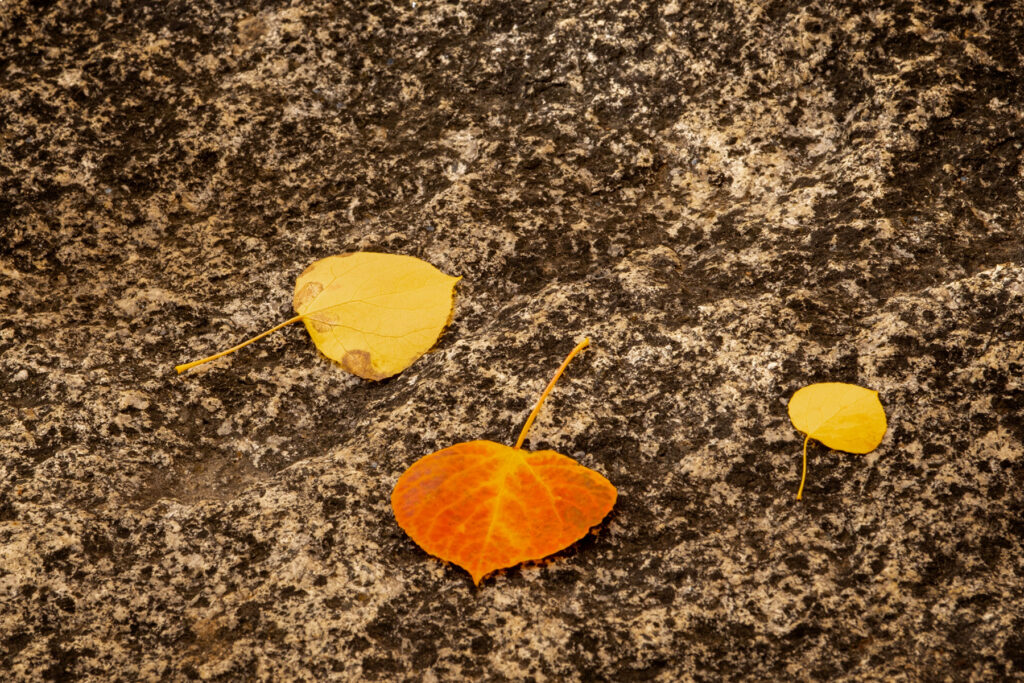
In this shot, I found these leaves on a large granite boulder sitting under the canopy of trees above. Now a shot like this won’t appeal to everyone and that’s OK. For me, it was a nice study in contrasts between the color of the leaves and the color of the granite rock. It still depicts a Fall color scene, just in a quieter and more introspective way. I was able to choose which angle I wanted to be at relative to the leaves, what height my tripod was and how much of an angle I wanted to stretch out the rock behind th leaves. I actually took dozens of different shots under the canopy, but you get the idea here.
We took the group up to the ancient bristlecone forest atop the White Mountains one afternoon. This is one of my favorite places to photograph because there is so much storytelling to be done up here. It’s a rugged, barren, harsh environment and the weathered trees are twisted and gnarled. You’re up at 10,500 feet, so walking around with a pack is a bit challenging in itself, let alone trying to be creative as the oxygen is much less. The first time one visits this area, it feels like an alien environment and can be difficult to get in the creative groove. With some gentle coaching we got everyone thinking creatively in how they could capture these amazing trees. Since we’re there to photograph the trees, we of course take “grander” photographs of the trees and sky and background mountains. It is an amazingly beautiful sight!

I eventually narrowed my vision from the grand landscape and began to look down at the land around me and what I saw could have filled several days of photography. From layered shale rocks, to lichen, small plants, etc…so much to do. But what I really love to do up here is find bunches of pinecones underneath some of these trees and find ways to photograph them.
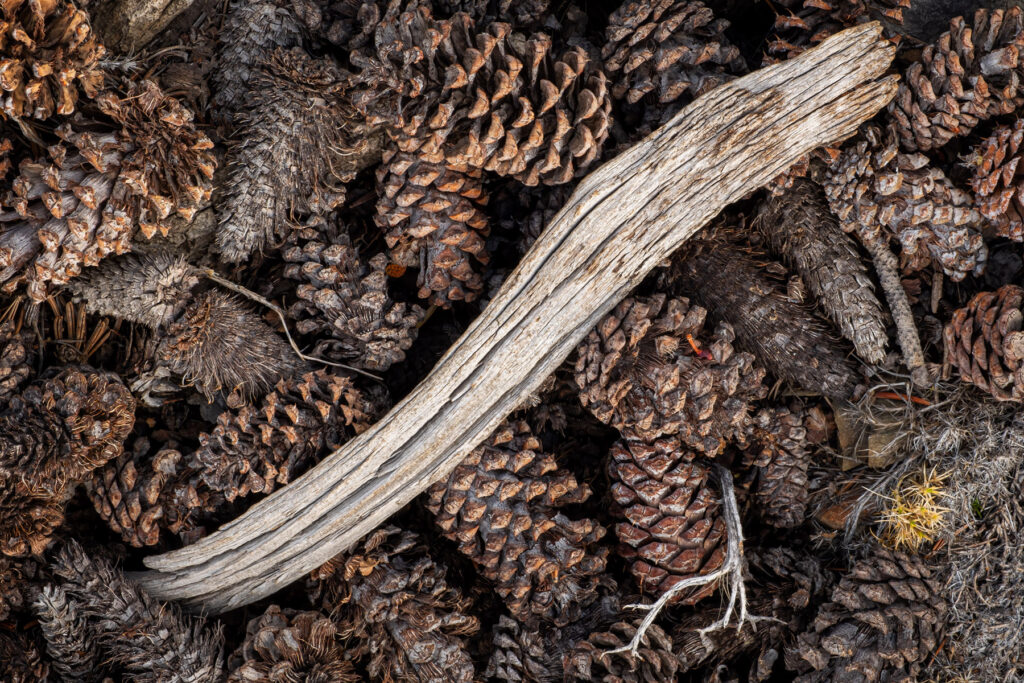
The photograph of the tree is amazing and jaw dropping, yet a shot like this is more artistically rewarding for me since I “found” this scene with my vision and then created the composition and executed it technically. Here is another iteration along the same theme.
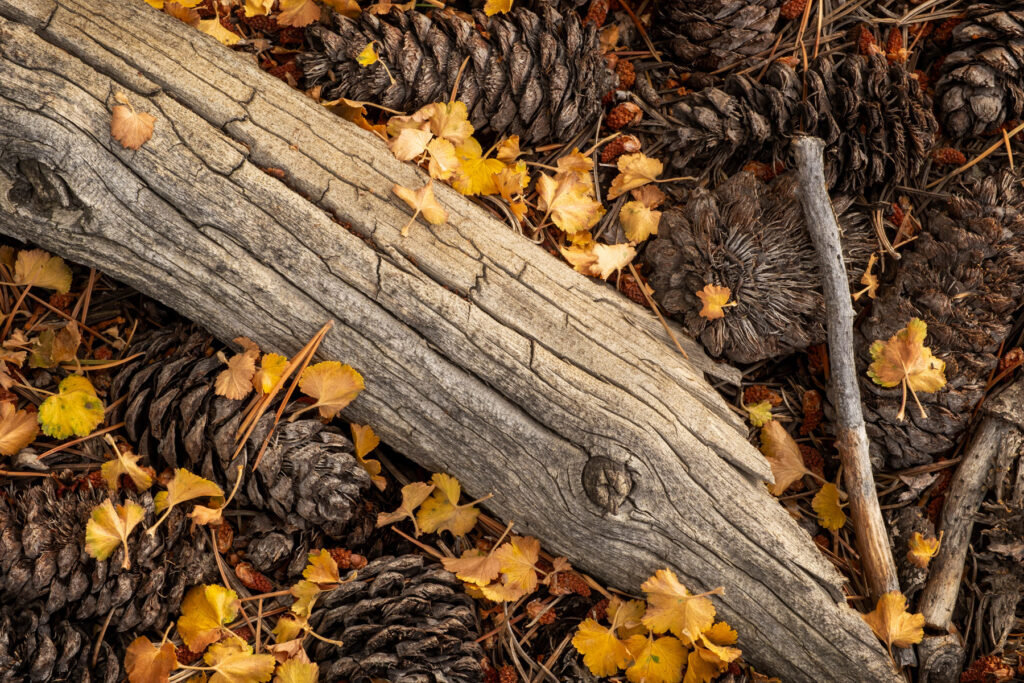
This shot encompasses “pine trees” “barrenness” of the stark wood, and “Fall” with the yellow leaves. I was able to distill a larger scene with those same attributes into a much smaller composition. If I didn’t look down, I would never have seen these images. Of course I pointed out this smaller world to the workshop folks who soon took to working the small details of this great location.
We eventually moved the workshop up to Lee Vining and surrounding area. From the ghost town of Bodie, to the canyons filled with colorful trees, we photographed the grand vistas as well as intimate scenes. For two mornings, we visited Mono Lake and the tufa that populate the south shore. You’re along the shore of a lake, yet still it feels like an alien environment with the strange tufa formations rising up around you. Of course the tufa are the main subject here and all of us captured quite a few shots of tufa on the shore and also rising in the lake. On the second morning, we were treated to a very colorful sunrise which we all were elated for!
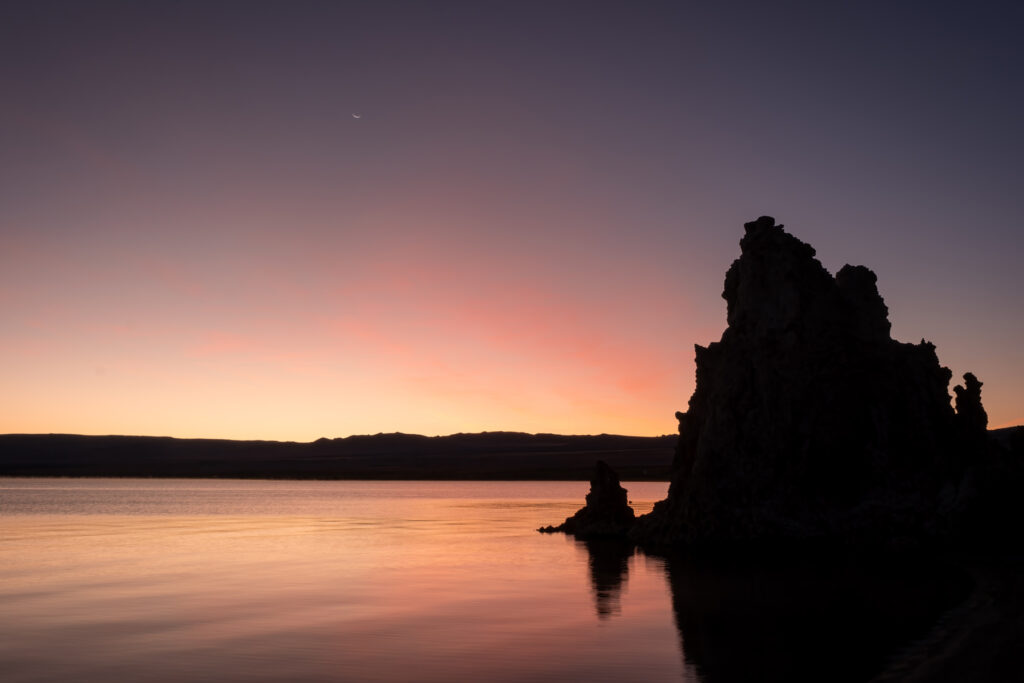
The color was a big part of the story in the grand landscape. In this particular photograph, I chose to focus more to the right, away from the tufa in the lake, to include the crescent moon above the rising sun. Because it was still pretty dark, I was able to get a longer shutter speed to smooth out the water. This particular image is very pretty and nice to look at, yet artistically it didn’t take a lot of effort to “create”. It really just involved figuring out where to end the right side of the photograph and to make sure I didn’t include any shoreline at the bottom of the frame. I snapped a few frames of this “grand landscape” shot as the sun was slowly rising, in between helping others refine their compositions.
There was a moment in time during this period that I was alone at my tripod and I was admiring the light and color and the way it was hitting the water and the tufa behind me. When I noticed this, guess what I did? I immediately moved to look down around me to see how this amazing light was interacting with smaller details nearby. As I was scanning, I came across a stick poking up above the water near the shoreline. I was then floored by the way the light and color was reflecting from the surface of the water. I knew I had something here. I quickly framed up a shot, reviewed it, recomposed and repeated. I came away with several iterations of the below scene, each one just slightly different in the angle of the sand, or the amount of shoreline visible, or the positioning of the stick in different parts of the frame.

When I saw the results on the back of the camera, I felt a huge amount of pleasure and satisfaction in the photograph because it was a small detail that I “saw” with my creative mind and then worked to compose and capture it in a way that most others wouldn’t notice. Plus, as I mature as an artist and photographer, I find more pleasure in the simpler scenes, ones that are quieter and more introspective, which of course this one is. There is color, a stick and the angle of the shoreline…not much more to this photograph. Yet it’s one that I feel very strongly about. Simply by looking down, away from the obvious subject, and adjusting my vision to “see” smaller, I pulled out a wonderful composition that pleases me as an artist! Granted this isn’t for a lot of folks and the wider shot will be more appealing to them, but I don’t care, my inner artist likes this shot because of the skill and process required to capture it.
We photographers see the world differently than non-photographers and I often describe myself as “seeing in patterns, shapes, textures and colors” instead of seeing objects. I am always on the lookout for interesting patterns, shapes, textures or colors and when something catches my eye, I then work to figure out if I can create a unique composition with it. There is a lot of information out there about “how” to do something, how to properly expose or use your particular camera. There is NOT enough information about artistic teachings, design thinking or the pleasure of creating something unique. This is the hard stuff to teach, and to learn, because it takes a lot of effort and opening up of yourself to new inputs and retraining the way we see the world. I encourage you to look down and see the world at a smaller level…you never know, you may find some amazing photographs right at your feet!

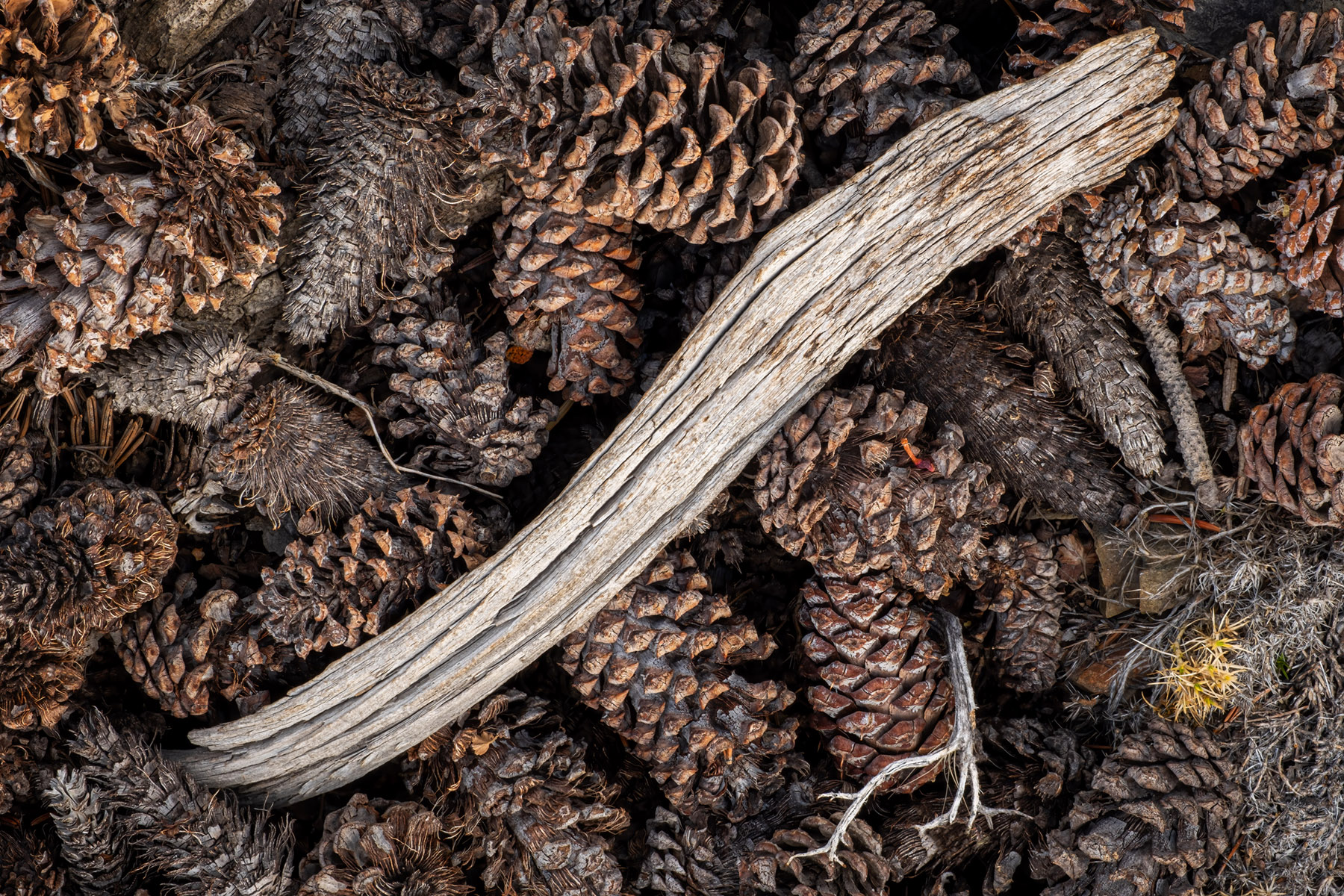
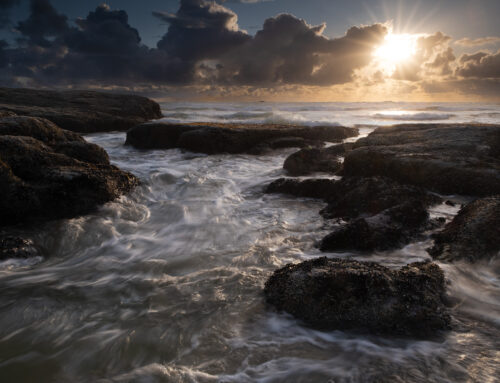
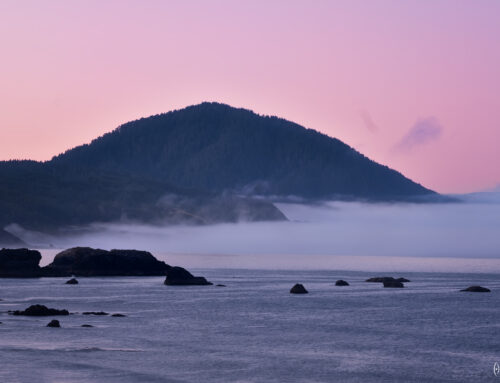
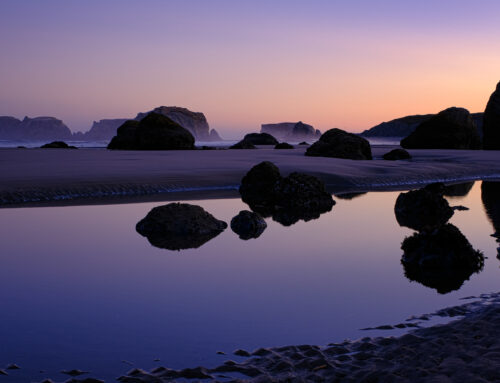
Leave A Comment